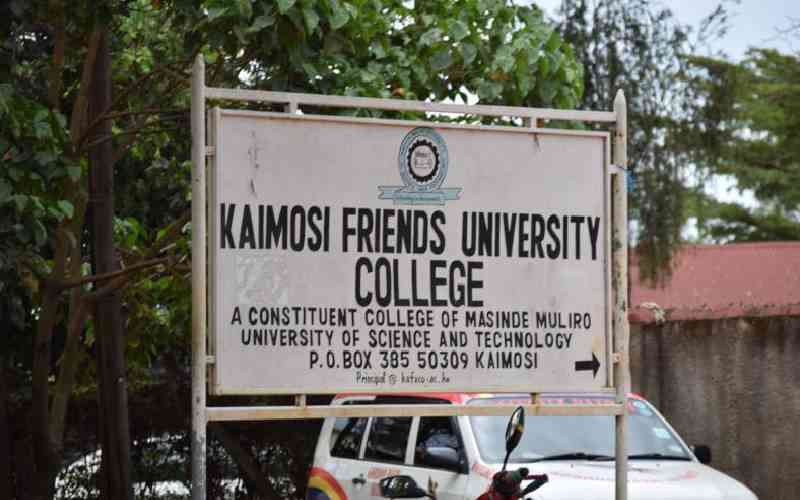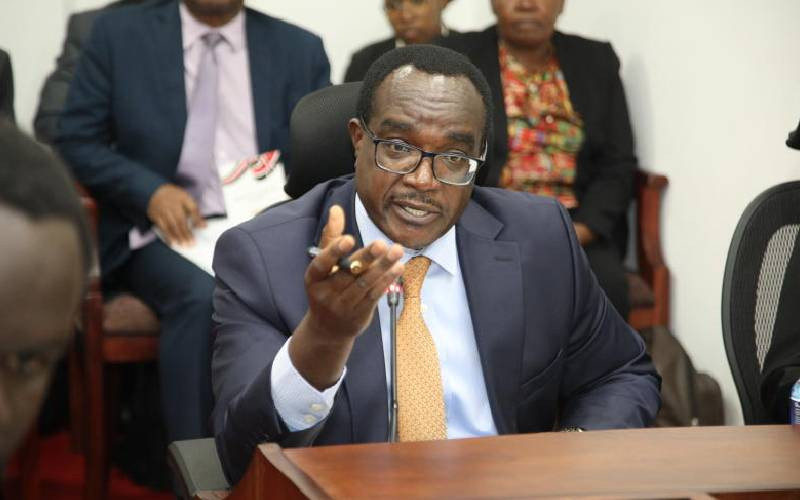A 2014 global report on education, The Learning Curve, states that attracting good teachers and treating them as professionals is one of the traits of education sectors of successful countries.
The recent strike by teachers in public schools demanding higher salaries and the pending dispute before the Industrial Court has brought to the spotlight Kenya’s education policy.
It is pleasantly surprising that technocrats have studied Kenya’s education sector and produced many and very recent policy papers. The Government recognises, at least on paper, the importance of education as a foundation for any country aspiring for long term and sustained economic growth.
According to the Education Sector Report for the past financial year, Kenya’s main potential is in its people, their creativity, education and entrepreneurial skills. For Kenya to become a globally competitive country, the necessary manpower must be developed, and education is the only key to achieving this goal.
The Social Pillar in Kenya’s Vision 2030 singles out education and training as the vehicle that will drive Kenya into becoming a middle-income economy.
Education has the potential to bridge the gap between the rich and poor by increasing the chances of children from poor families attaining better skills, jobs and higher incomes than their parents. Education equips them with the knowledge and skills that enable them to make informed choices.
For the last couple of years, the government has made various changes in the education sector. It introduced free primary education in 2003 followed by free day secondary education in 2008.
The ranking of schools has recently been scraped as have national examination fees. By subsidising the cost of basic education and scraping examination fees the government has increased access to education.
There is the ongoing project for the electrification of rural public primary schools that should be followed by the supply of a laptop for every Standard One child.
Though steps have been taken to reform and improve the education sector, they have been piecemeal, uncoordinated and insufficient. Successful countries focus fiercely on the quality of teaching. They sustain quality of teaching by adopting a philosophy and policies that are kept consistent without zigzag changes of direction.
Free primary education and free day secondary education has increased enrolment at primary and secondary levels in Kenya. However, learning achievements have declined. This is as a result of understaffing, inadequacy of learning materials and crowded classrooms.
This downward slide in standards and quality in public education undermines the government’s financial and economic investment in free basic education. And for as long as this state of affairs persists, more parents will transfer their children to private schools.
So long as those parents who can afford private schools, do not consider free public schools as a viable option, then the quality of education in public schools needs to be constantly assessed and raised. For as long as the quality of private education and public education is not at par, the children of the poor and their children will remain disadvantaged.
The 2012 report of the task force on the Re-Alignment of the Education Sector in Kenya advised the government that access, equity, quality and relevance are the fundamental characteristics that should define and drive systems of education and training.
This report recommends comprehensive changes to increase access, quality, relevance and equity into the education sector. Very few of these recommendations have been implemented to date.
The value which education can provide by passing on skills to people is enormous. As a matter of fact, half of the economic growth in developing countries in the last ten years came from better skills.
Stay informed. Subscribe to our newsletter
An improved education sector is Kenya’s biggest anti-poverty bet.
 The Standard Group Plc is a
multi-media organization with investments in media platforms spanning newspaper
print operations, television, radio broadcasting, digital and online services. The
Standard Group is recognized as a leading multi-media house in Kenya with a key
influence in matters of national and international interest.
The Standard Group Plc is a
multi-media organization with investments in media platforms spanning newspaper
print operations, television, radio broadcasting, digital and online services. The
Standard Group is recognized as a leading multi-media house in Kenya with a key
influence in matters of national and international interest.
 The Standard Group Plc is a
multi-media organization with investments in media platforms spanning newspaper
print operations, television, radio broadcasting, digital and online services. The
Standard Group is recognized as a leading multi-media house in Kenya with a key
influence in matters of national and international interest.
The Standard Group Plc is a
multi-media organization with investments in media platforms spanning newspaper
print operations, television, radio broadcasting, digital and online services. The
Standard Group is recognized as a leading multi-media house in Kenya with a key
influence in matters of national and international interest.








